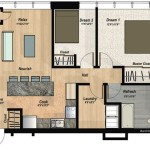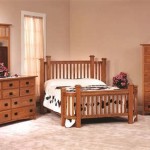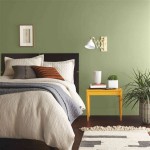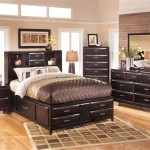Standard Fan Size for Bedroom
Choosing the right ceiling fan size is crucial for optimal comfort and energy efficiency in a bedroom. An improperly sized fan can be ineffective at circulating air or create excessive drafts, detracting from the intended purpose. This article explores the standard fan sizes suitable for bedrooms, factors influencing the selection process, and provides guidelines for making an informed decision.
Bedroom Size and Fan Blade Span
The primary factor determining appropriate fan size is the room's square footage. For smaller bedrooms, typically under 75 square feet, a fan with a blade span of 29 to 36 inches is generally sufficient. These smaller fans are ideal for compact spaces and provide adequate airflow without overwhelming the room. For medium-sized bedrooms, ranging from 75 to 144 square feet, a fan with a blade span of 36 to 42 inches is recommended. This size strikes a balance between air circulation and visual proportion within the space. In larger bedrooms exceeding 144 square feet, a fan with a blade span of 52 inches or larger is necessary to effectively move air throughout the entire room. In rooms larger than 225 square feet, using two smaller fans may be more effective than a single large one.
Ceiling Height Considerations
Ceiling height plays a significant role in determining the appropriate fan installation and downrod length. Standard ceilings, typically 8 feet high, work well with standard fan installations. However, for higher ceilings, a downrod is necessary to ensure the fan blades are at the optimal distance from the floor. A general guideline suggests a hanging height of 7 to 9 feet from the floor to the blades. For ceilings 9 feet and higher, a longer downrod becomes essential. Longer downrods not only ensure proper airflow but also enhance the fan's aesthetic appeal in rooms with high ceilings.
Matching Fan Style to Bedroom Decor
While functionality is paramount, the fan's style should complement the bedroom's overall decor. A wide variety of styles are available, from traditional to contemporary, allowing for seamless integration with various interior design schemes. Finishes like brushed nickel, bronze, and white offer versatility in matching existing hardware and color palettes. The fan's design, including the blade shape and light kit, should harmonize with the room's aesthetic to create a cohesive and visually appealing environment. Consider the existing lighting fixtures and furniture styles to ensure the chosen fan contributes to the overall design cohesiveness.
Airflow and CFM Ratings
Cubic Feet per Minute (CFM) is a crucial metric indicating the volume of air a fan moves. A higher CFM rating signifies greater airflow. When selecting a fan, consider the room's size and the desired airflow intensity. For bedrooms, a moderate CFM is usually sufficient for comfortable air circulation without creating excessive drafts. Manufacturers often provide CFM ratings for their fans, making it easy to compare models and choose one appropriate for the specific bedroom size and desired airflow. It's essential to strike a balance between sufficient airflow and quiet operation, especially in a bedroom environment.
Energy Efficiency and Motor Design
Energy-efficient fans contribute to lower energy consumption and reduced utility costs. Look for fans with Energy Star certification, indicating they meet specific energy efficiency standards. The motor's design also plays a role in energy efficiency and noise levels. DC motors are generally more energy-efficient and quieter than traditional AC motors. While DC motors may have a higher initial cost, their long-term energy savings and quiet operation can offset the initial investment, making them a worthwhile consideration for bedroom applications.
Installation and Safety Precautions
Proper installation is critical for safety and optimal fan performance. Following manufacturer instructions and adhering to local electrical codes is essential. Ensuring proper wiring, secure mounting, and blade balancing are crucial for safe and efficient operation. If unsure about any aspect of the installation process, consulting a qualified electrician is highly recommended. Safety should always be the top priority when dealing with electrical installations.

Ceiling Fan Size Guide Delmarfans Com

How To Select The Right Size For Every Room

Ceiling Fan Size Guide Choosing The Right For Your Room

Ceiling Fan Size Guide Delmarfans Com

Ceiling Fan Size Guide Delmarfans Com

Ceiling Fan Size Guide Delmarfans Com

How To Measure A Ceiling Fan Hunter

How To Measure A Ceiling Fan Hunter

How To Measure A Ceiling Fan Hunter

Antoine Low Profile Modern Enclosed Farmhouse 20 In Bedroom Black Minimalist With Smoke Gray Blades Integrated Led Indoor Flush Mount Smart Ceiling Fan Light And Remote 5 Blade Lsbd 29 At Lowes Com








